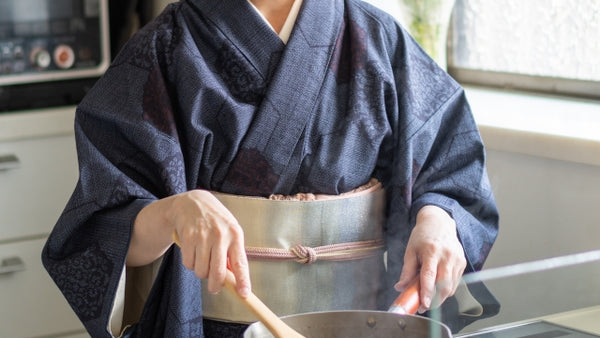The Art of Go-Ho: Japan's Five Quintessential Cooking Techniques

In every cuisine, there are unique approaches to cooking and methods specific to that culture. They define the style of a cuisine and affect everything from the ingredients used to the philosophy behind certain meals. In Japan, there are five defining techniques or methods of preparing food, known as the Go-ho; "go" meaning five and "ho" meaning method or technique.
While these five methods are fundamental to preparing quality, authentic Japanese food, they serve a purpose beyond merely shaping and cooking ingredients. These Go-ho are meant to preserve certain elements of the ingredient’s true nature, ensuring that their true flavors and textures are portrayed through one’s cooking. Above all, they help to invoke the five tastes, go-mi, and five senses, go-kan, for a satisfying meal in every way possible.

In this way, food is truly a window into Japanese culture. It is a way to understand why a piece of fish might be grilled rather than fried and served on a fine lacquered plate rather than a rough, handcrafted piece of stoneware. The five methods go hand in hand with the five senses and tastes. In Japan, there is a saying that “We eat with our eyes,” so the very presentation and the way the method of preparation changes an ingredient visually will change the way it tastes.
As such, the five methods are key in determining these essential elements of Japanese cooking. The go-ho are raw, simmered, steamed, grilled, and fried (nama, niru, musu, yaku, and ageru).
Nama/Raw
While the word “raw” may not seem like it involves much as far as methods and techniques go, in fact, it’s an integral part of Japanese cooking as it’s defined by knife skills and one’s ability to shape ingredients. This involves everything from intricate knife work for detailed designs cut into vegetables to cutting ingredients to the perfect bite-sized portion. Also, think of some of the most iconic Japanese foods like sashimi and sushi, where raw ingredients are prepared with the utmost skill.
Niru/Simmer
Simmered dishes in Japanese cuisine come with a variety of styles and methods, from nimono to misoni, tsukudani to nikorogashi. Whichever method, their main goal is to maintain an ingredient’s shape while also infusing it with deep flavors using low, slow, gentle heat and flavorful broths and sauces.

Musu/Steam
Deceptively difficult, steaming is another of the go-ho, aimed at preserving the shape and some of the original aroma and essence of the ingredients. A quick, hot stay in a tightly closed steamer basket will keep in all the moisture and nutrients you want your ingredients to have!
Yaku/Grill
A method that takes skill in both timing and knowledge of heating, grilling can be done over an open fire, on a skillet, or in a pan. The direct exposure to flames and high heat helps to concentrate flavors and draw out moisture, invoking quite a few of the five senses.

Ageru/Fry
Demonstrated perfectly in one of Japan’s most well-known foods, tempura, frying can be a versatile method based on what type of batter/coating one uses as well as the temperature and amount of oil used. The exposure to high heat for a short period of time lends itself to preserving the ingredient’s moisture and flavor while adding an extra layer of flavor and texture on the outside.
With a grasp of the basic concepts of the go-ho, you can begin to practice and perfect these foundational techniques to take not only your knowledge of Japanese cuisine even further, but also your overall skills in the kitchen!
About the Author:
 Kevin Kilcoyne
Kevin Kilcoyne



